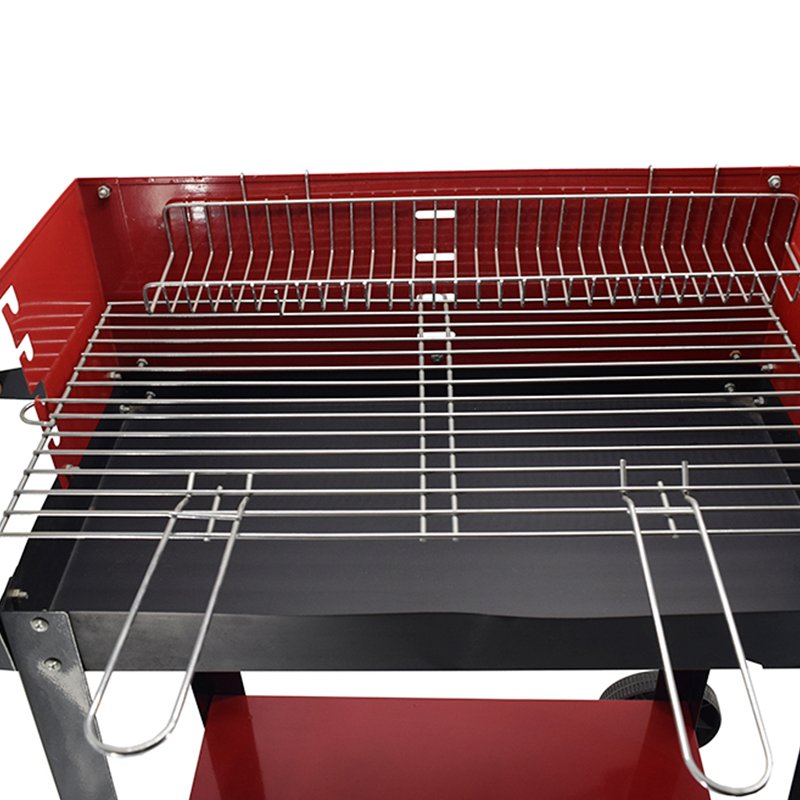gas grill for camping Maintaining Gas Grills: A Guide
by:Longzhao BBQ
2019-10-30

By EDWARD R.Before 1997, outdoor cooking involves lighting a pile of charcoal in a brick or stone fireplace.For those who don't have a brick pit or want to take a barbecue to their favorite resort location, the manufacturer offers a portable charcoal grill.In the end, the designers developed a gas grill without charcoal, but still provided the full flavor of outdoor cooking.To put it simply, here is how the gas grill works.The gas flows from the tank to the device.A shut-Close the valve to adjust the flow of gas.When the valve is opened, the gas flows through the orifice into the Wenzhong pipe, where it is mixed with the air.The gas-The air mixture spreads from the burner port to the burner and outlet, where it is ignited.Most grills have piezoelectric igniters that generate sparks to ignite the gas.air.Electric firearms can be operated using buttons or knobs.While both generate sparks, rotating igniters are easier to use and are more likely to shine when trying for the first time.Above the burner is a hot dispenser, a shelf with lava rocks, ceramic coal balls, or metal triangles.When dripping from the food to the hot dispenser, they are evaporated into aromatic smoke.This cigarette gave the top food bast a bit, giving it a special flavor of outdoor cooking.If the gas grill is to provide safe and reliable services, it needs to be maintained every year.First check the lava rocks or ceramic coal balls on the thermal distribution grid.These absorb food residue and grease that may fall on the burner.However, they are covered with excess grease and lose their absorption capacity.It's simple to clean up ads.Turn the stone over when the grill is cold so that the greasy side faces the burner.Ignite the flame;Adjust the heat control to high;Then cover.After about 15 minutes the grease will be burned and the coal ball will be available again.The advertisement cools the grill;Then remove the cooking grid.Scrub them with a soft brass brush to remove grease and food deposits.(Brushes made for this purpose can be used in the home center.) You can also use an oven cleaner on a grid where food or grease is piled up badly.Spray it on;Wait about 30 minutes;Then let it go.This should make the deposits loose enough so they can be scraped off.Next, remove the burner and the Wenchang assembly.These can be blocked by grease, dirt and even spider webs.On some grills, the burner may be raised right away, but in most cases you have to release the fixing clip near the housing.Scrub the assembly with a soft brush, soap and water.Clean the inside of the tube with a soft bottle brush.Dry the components;Then double check if it has tiny holes caused by rust or corrosion.Replace all defective parts.Please click on the box to verify that you are not a robot.The email address is invalid.Please re-enter.You must select the newsletter you want to subscribe.View all New York Times newsletters.Check if there is a cut or gap in the ignition line.These defects may seem small, but they may discharge from the wires and cause a danger of electric shock.If you find a defect, it is better to replace the wire or the whole ignition.Check if the gas hole is blocked.If the opening is blocked, clean it up with a wooden toothpick.Do not use metal wires that may damage the opening of the hole.When disconnecting the burner assembly, you can clean the grill housing.First, wrap the gas hole with plastic wrap.This will prevent water from entering and possibly corrupting them.Scrub the inside and outside surfaces of the shell with a wipe brush and warm soapy water.Rinse with garden hose;Then dry the grill with a towel.Check the outer surface of the housing to obtain the chip in the finish.You can decorate these with spray paint specially made for high temperature applications.Replace the burner assembly when the paint is dry.Once the grill is clean and all the components are in place, turn your attention to the gas line.First, remove any dirt on the line, water tank and accessories.Then test their condition by brushing their teeth on a soap aqueous solution.If there is any leakage, the solution will start to bubble.Leakage around the accessory can sometimes be done by tightening the accessory, sealing the coated thread with a pipe or replacing O-ring.If these attempts fail, the entire accessory may need to be replaced.Check the propane tank for dents and rust.A large dent can reduce the internal volume of the tank and cause the gas to be discharged through the pressure relief valve, resulting in a fire hazard.Rust on the surface of the tank may not be of concern, provided that it is not corroded by metal.However, rust spots should be polished to bare metal and then painted with primer and paint.Always store propane tanks outdoors, away from direct sunlight.A warm temperature causes the gas to expand inside the tank, forcing the gas to pass through the safety valve.After you have performed this maintenance procedure, keep the grill in good condition by protecting the grill with a lid.We are constantly improving the quality of text archives.Please send feedback, error reports, and suggestions to archid_feedback @ nytimes.com.A version of this article appears on page NJ13 of the national edition of July 13, 1997 with the title: maintenance of gas grill: Guide.
Custom message








